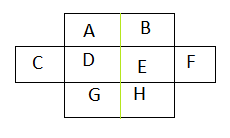Subject Experts Solutions for Chapter: Cryptography, Exercise 3: EXERCISE - 2
Subject Experts Mental Ability Solutions for Exercise - Subject Experts Solutions for Chapter: Cryptography, Exercise 3: EXERCISE - 2
Attempt the free practice questions on Chapter 23: Cryptography, Exercise 3: EXERCISE - 2 with hints and solutions to strengthen your understanding. Mental Ability for NTSE Stage 1 & 2 Class 10 solutions are prepared by Experienced Embibe Experts.
Questions from Subject Experts Solutions for Chapter: Cryptography, Exercise 3: EXERCISE - 2 with Hints & Solutions
Given,
Now, if 'P' stands for , 'M' for and 'Q' for , then, what is the difference between the numbers M N P and PN?
Given,
Now, if 'P' stands for , 'M' for and 'Q' for , then,
S P A M stands for?
In the following multiplication, each of the different letter denotes a different integer. Each letter stands for the same integer throughout. If 'B' stands for and "E' stands for , then what is the difference between 'F' and 'D' ?
In this multiplication question the five letters represent five different digits. What are the actual figures? There is no zero.
Using the total number of alphabets in your solution as a parameter, find the number that represents G if,
If A, B, C, D are distinct decimal digits, then which of the following options is correct?
A,B,C,D,E,F,G,H are each to be assigned a different number from 1 to 8. What should be values of B, D, E, F and G so that no consecutive number are in adjacent(even diagonally) squares.
Given: A=, C= , H=

